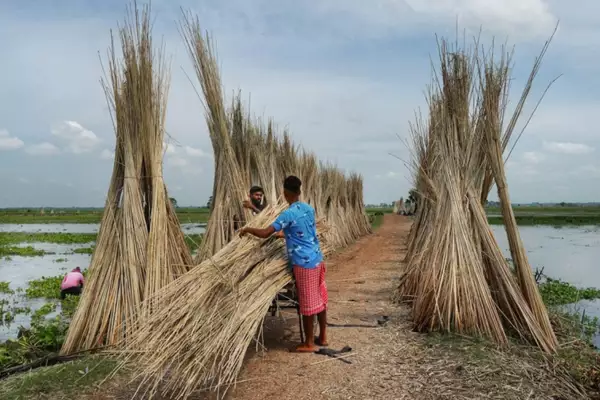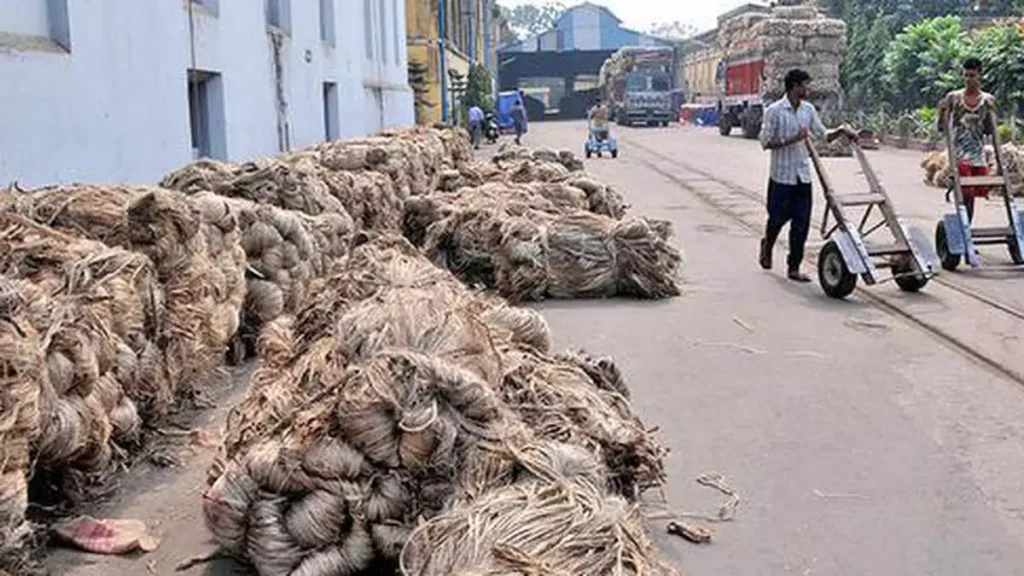A significant 20% drop in Jute production is expected in 2024-25 due to impact of natural calamities like floods in the regions of West Bengal and Assam.
State of Jute Industry in India:
- The jute industry is one of India’s oldest and most prominent industries, with major producing states being West Bengal, Assam, Bihar, Orissa, and Andhra Pradesh.
- The industry heavily relies on West Bengal due to the higher number of mills, and approximately 4 lakh workers are employed in this industry and its related sectors.
- India is the world’s leading jute goods producer, accounting for about 75% of estimated global production, but about 90% of total production is consumed domestically.
- Jute exports had the potential for ₹4,500 crore annually, it was ₹3,000 crore last financial year and projected to be almost ₹3,500 crore during the current fiscal.
- Jute Technology Mission 2.0 is under process of drafting, along with research projects to find more applications for jute.
- About one tonne of jute plant would give 495 litres of ethanol, which led to establishment of a pilot unit.
Government Initiatives
- Governing Bodies: National Jute Board and Jute Product Development & Export Promotion Council (JPDEPC).
- JPDEPC was formed in 1958 to promote jute exports through fairs, market analysis, and registration services.
- Reservation Norms: The Cabinet Committee on Economic Affairs mandated the use of jute for packaging foodgrains and sugar, ensuring 100% and 20% packaging, respectively, in jute bags.
- This decision supports domestic production, provides relief to workers and farmers, and promotes environmental sustainability.
- Export Market Promotion Activities (EMPA): International fairs, business delegations, conferences, and seminars.
- Market Development & Promotion Scheme (MDPS): Provides platforms for jute artisans, entrepreneurs, and exporters.
- Capital Subsidy for Acquisition of Plants and Machinery (CSAPM): Offers financial assistance for the purchase of jute diversified products manufacturing machinery.
About National Jute Board:
- It is a statutory body established in 1955 to promote and develop the jute industry in India, and governed by National Jute Board Act-2008, as framed by the Ministry of Textiles.
- The Board’s primary objectives include:
- It focuses on human resource development, technology dissemination, machinery assistance, training, quality control, market assistance, and ensures fair prices to jute growers .
- The Board provides price support to jute growers through various schemes, including the Jute Corporation of India (JCI).
- This enables organized and decentralized sector to compete and increase the global share of Indian jute goods consumption.
Key Initiatives:
- Improved Cultivation and Retting Exercises (ICARE), Jute Diversification Scheme, Jute Resource-cum Production Centre (JRCPC), and Jute Retail Outlet scheme.
- Market Development and Promotion: Domestic Market Promotion Activities (DMPA) and other publicity and promotion activities.
Ref: Source
| UPSC IAS Preparation Resources | |
| Current Affairs Analysis | Topperspedia |
| GS Shots | Simply Explained |
| Daily Flash Cards | Daily Quiz |
Frequently Asked Question:
What is the National Jute Board (NJB)?
The NJB is a statutory body established to promote and develop the jute industry in India. It is governed by the National Jute Board Act-2008.
What are the key functions of the NJB?
The NJB focuses on human resource development, technology dissemination, machinery assistance, training, quality control, market assistance, and ensuring fair prices to jute growers.
What are the challenges faced by the jute industry in India?
The jute industry faces several challenges, including competition from synthetic fibers, fluctuations in global prices, and the need for modernization and diversification.


